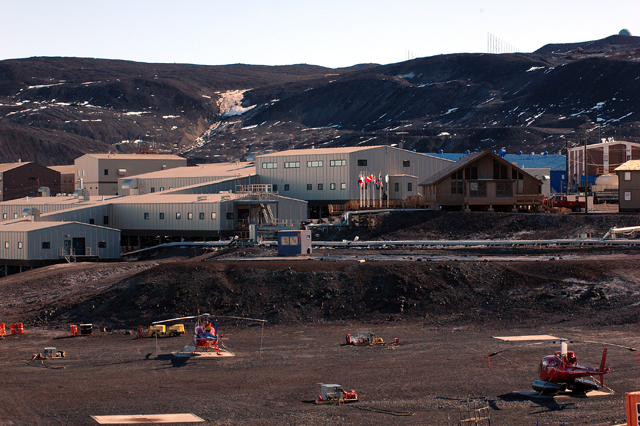NSF FY2012 budgetOPP request focuses on polar oceans and agency-wide initiativesPosted February 25, 2011
The National Science Foundation (NSF) In addition, if approved, NSF will receive $1 billion over five years for research on improving access to wireless broadband through the Wireless Innovation Fund proposed under the White House’s Wireless Innovation and Infrastructure Initiative. New NSF Director Subra Suresh said in a press release that the request is “designed to maintain the agency’s position as the nation’s engine of innovation in science, engineering and science education.” [For more information, see FY2012 Budget Request The agency has been operating under a continuing budget resolution since 2010, meaning funding did not increase in 2011, though the agency’s budget was bolstered by $3 billion in money from the American Recovery and Reinvestment Act (ARRA) NSF’s Office of Polar Program (OPP) Antarctic Infrastructure and Logistics Research money would be focused in three areas of OPP. A total of $16 million would be allocated to a relatively new program called Discovery and Understanding in Polar Oceans, with $7.7 million for Antarctic sciences. The Southern Ocean that surrounds Antarctica plays a significant role in the global ocean system, according to NSF OPP budget documents, and understanding its influences on the ice sheet and response to increasing levels of carbon dioxide in the atmosphere will be important for understanding climate change in the future. Of the nearly $1 billion slated for the NSF’s Science, Engineering and Education for Sustainability, or SEES, a portfolio of programs launched in 2011, OPP will receive $83.65 million, a jump of more than 28 percent. The SEES program “advances climate and energy science, engineering and education to provide a sound scientific basis for shaping policies for environmental and economic sustainability and sustainable human well-being.” Another NSF-wide program, Cyberinfrastructure for 21st Century Science and Engineering, or CIF21, represents a new investment “designed to develop and deploy a comprehensive, integrated, sustainable and secure cyberinfrastructure framework to accelerate research and new functional capabilities in computational and data-intensive science and engineering.” Total NSF budget for CIF21 is $117 million. Four-million-dollars of this money is earmarked for OPP. OPP is expected to fund 352 proposals in the coming fiscal year. In addition, funding will continue for the Center for Remote Sensing of Ice Sheets (CReSIS) The logistics arm of the U.S. Antarctic Program “Once fully implemented, these enhancements will have a cascading effect through the entire Antarctic resupply chain by driving down the amount of fossil fuel transported to Antarctica,” according to OPP budget documents. OPP is also seeking $3 million to begin stabilizing the Palmer Station To help balance the books, OPP has proposed reducing airlift support for new deep-field research by about 15 percent, as it continues efforts to consolidate aviation operations at Pegasus Airfield While the Obama’s proposed 2012 fiscal year budget emphasizes investments in science and technology, the proposals are expected to face stiff opposition in the GOP-dominated House of Representatives. The appropriations committee in the House recently proposed cutting $62 billion from current spending across the government, including large reductions at the NSF and other agencies funding basic research. The House committee has proposed slashing nearly $400 million from the NSF. |



For USAP Participants |
For The Public |
For Researchers and EducatorsContact UsNational Science FoundationOffice of Polar Programs Geosciences Directorate 2415 Eisenhower Avenue, Suite W7100 Alexandria, VA 22314 Sign up for the NSF Office of Polar Programs newsletter and events. Feedback Form |




